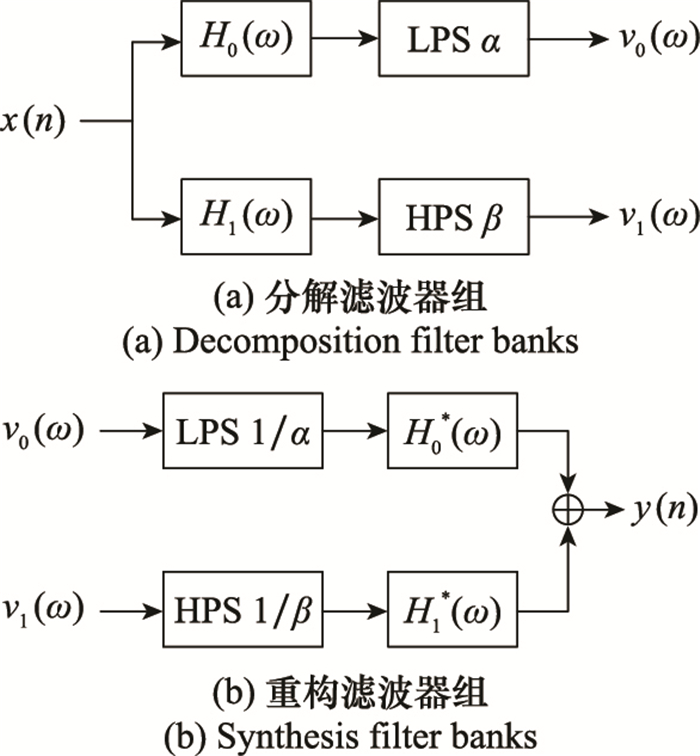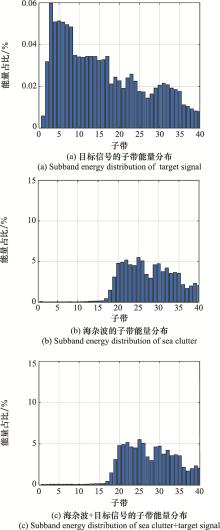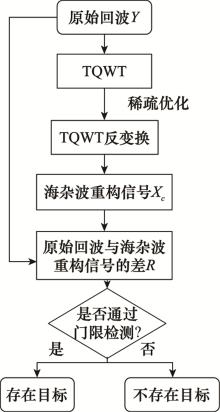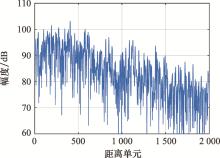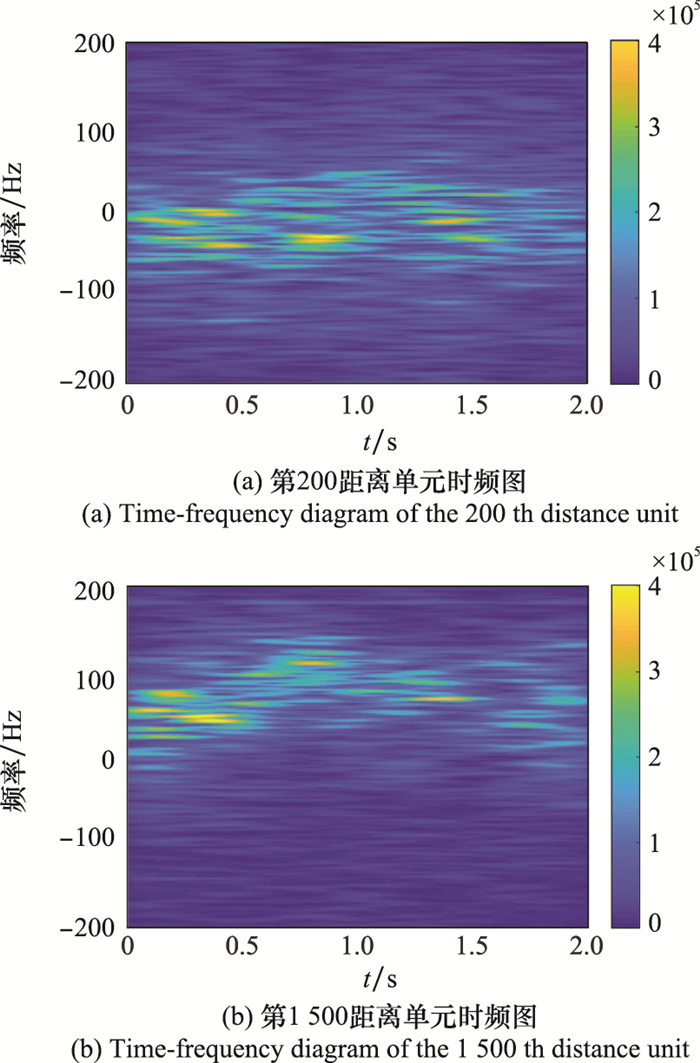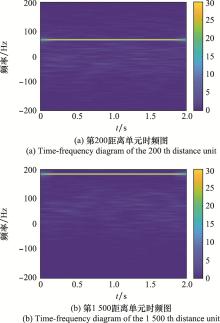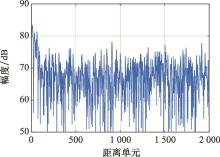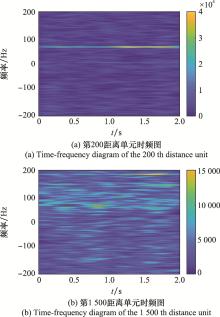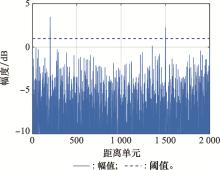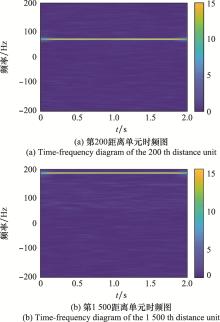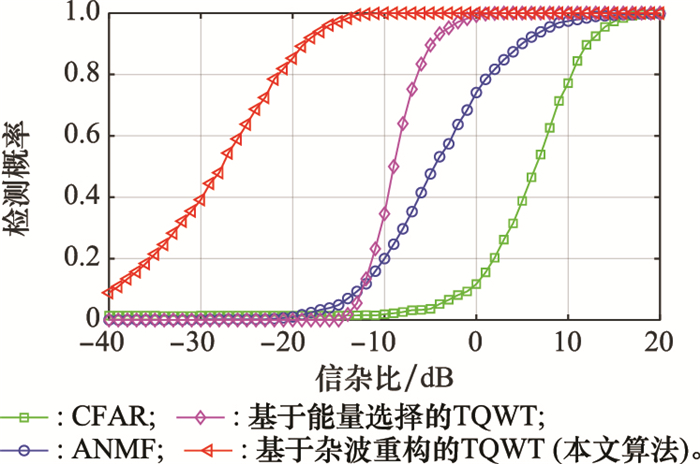Systems Engineering and Electronics ›› 2023, Vol. 45 ›› Issue (2): 343-351.doi: 10.12305/j.issn.1001-506X.2023.02.03
• Electronic Technology • Previous Articles
Sea clutter suppression algorithm based on tunable Q-factor wavelet transform
Junling ZHANG, Mei DONG, Baixiao CHEN
- National Laboratory of Radar Signal Processing, Xidian University, Xi'an 710071, China
-
Received:2021-09-28Online:2023-01-13Published:2023-02-04 -
Contact:Mei DONG
CLC Number:
Cite this article
Junling ZHANG, Mei DONG, Baixiao CHEN. Sea clutter suppression algorithm based on tunable Q-factor wavelet transform[J]. Systems Engineering and Electronics, 2023, 45(2): 343-351.
share this article
| 1 | 许述文, 白晓惠, 郭子薰, 等. 海杂波背景下雷达目标特征检测方法的现状与展望[J]. 雷达学报, 2020, 9 (4): 684- 714. |
| XU S W , BAI X H , GUO Z X , et al. Status and prospects of feature-based detection methods for floating targets on the sea surface[J]. Journal of Radars, 2020, 9 (4): 684- 714. | |
| 2 |
何友, 黄勇, 关键, 等. 海杂波中的雷达目标检测技术综述[J]. 现代雷达, 2014, 36 (12): 1- 9.
doi: 10.3969/j.issn.1004-7859.2014.12.001 |
|
HE Y , HUANG Y , GUAN J , et al. An overview on radar target detection in sea clutter[J]. Modern Radar, 2014, 36 (12): 1- 9.
doi: 10.3969/j.issn.1004-7859.2014.12.001 |
|
| 3 | 张维. 复杂杂波背景恒虚警检测技术研究[D]. 南京: 南京航空航天大学, 2009. |
| ZHANG W. Research on the techniques of radar constant false alarm rate detection under complex clutter[D]. Nanjing: Nanjing University of Aeronautics and Astronautics, 2009. | |
| 4 | ZHANG X W, YANG D D, GUO J X, et al. Weaking moving target detection based on short-time Fourier transform in sea clutter[C]//Proc. of the IEEE 4th International Conference on Signal and Image Processing, 2019: 415-419. |
| 5 | 袁俊泉, 皇甫堪, 王展. 海洋环境中基于WVD的LFM信号检测方法[J]. 国防科技大学学报, 2002, 24 (4): 73- 76. |
| YUAN J Q , HUANGFU K , WANG Z . A new approach with Wigner-Ville distribution based on LFM signal detection in the ocean[J]. Journal of National University of Defense Technology, 2002, 24 (4): 73- 76. | |
| 6 | DUK V , ROSENBERG L , NG B W H . Target detection in sea-clutter using stationary wavelet transform[J]. IEEE Geoscience and Remote Sensing Letters, 2018, 15 (10): 1505- 1509. |
| 7 | 梁壮, 温利武, 丁金闪. 改进型SVD-FRFT海杂波抑制方法[J]. 西安电子科技大学学报, 2021, 48 (2): 55- 63. |
| LIANG Z , WEN L W , DING J S . Improved SVD-FRFT sea clutter suppression method[J]. Journal of Xidian University, 2021, 48 (2): 55- 63. | |
| 8 | 左磊, 产秀秀, 禄晓飞, 等. 时频域分解海面回波及慢速微弱目标检测[J]. 西安电子科技大学学报, 2019, 46 (5): 84- 90. |
| ZUO L , CHAN X X , LU X F , et al. Detection of slow and weak target in time-frequency domain decomposition surface echo wave[J]. Journal of Xidian University, 2019, 46 (5): 84- 90. | |
| 9 | SELESNICK I. TQWT toolbox guide[EB/OL]. [2021-09-28]. http://eeweb.poly.edu/iselesni/TQWT/index.html. |
| 10 | NG B, ROSENBERG L, NGUYEN S T N. Target detection in sea clutter using resonance based signal decomposition[C]//Proc. of the IEEE Radar Conference, 2016. |
| 11 | ROSENBERG L, NG B. Sprase signal separation methods for target detection in sea-clutter[C]//Proc. of the IEEE Radar Conference, 2018. |
| 12 | FARSHCHIAN M, SELESNICK I. Application of a sparse time-frequency technique for targets with oscillatory fluctuations[C]//Proc. of the IEEE Waveform Diversity & Design Conference, 2012: 191-196. |
| 13 | 潘美艳, 杨予昊, 李大圣, 等. 一种基于能量选择的改进TQWT海杂波抑制算法[J]. 现代雷达, 2018, 40 (10): 32- 37. |
| PAN M Y , YANG Y H , LI D S , et al. Improved TQWT sea clutter suppression algorithm based on energy selection[J]. Modern Radar, 2018, 40 (10): 32- 37. | |
| 14 | 冯云, 宗竹林, 李思琦. 基于自适应可调Q因子小波变换的海杂波背景下的目标检测技术[J]. 信号处理, 2021, 37 (2): 304- 316. |
| FENG Y , ZONG Z L , LI S Q . Based on adaptive tunable Q-factor wavelet transform target detection technology under sea clutter background[J]. Journal of Signal Processing, 2021, 37 (2): 304- 316. | |
| 15 | SELESNICK I . Wavelet transform with tunable Q-factor[J]. IEEE Trans.on Signal Processing, 2011, 59 (8): 3560- 3575. |
| 16 | SELESNICK I . Sparse signal representations using the tunable Q-factor wavelet transform[J]. Proceeding of SPIE, 2011, 8138 (3): 815- 822. |
| 17 | 冯云. 海杂波背景下的目标检测技术研究[D]. 成都: 电子科技大学, 2021. |
| FENG Y. Research on target detection technology in sea clutter background[D]. Chengdu: University of Electronic Science and Technology of China, 2021. | |
| 18 | VASWANI L N. Modified basis pursuit denoising (modified-BPDN) for noisy compressive sensing with partially known support[C]//Proc. of the IEEE International Conference on Acoustics Speech and Signal Processing, 2010: 3926-3929. |
| 19 | ROSENBERG L , DUK V , NG B . Detection in sea clutter using sparse signal separation[J]. IEEE Trans.on Aerospace and Electronic Systems, 2020, 56 (6): 4384- 4394. |
| 20 | DUK V, NG B, ROSENBERG L. Adaptive regularisation for radar sea clutter signal separation using a sparse-based method[C]//Proc. of the International Conference on Radar System, 2017. |
| 21 | AFONSO M V , BIOUCAS D , JOSE M , et al. Fast image recovery using variable splitting and constrained optimization[J]. IEEE Trans.on Image Processing, 2010, 19 (9): 2345- 2356. |
| 22 | 刘宁波, 董云龙, 王国庆, 等. X波段雷达对海探测试验与数据获取[J]. 雷达学报, 2019, 8 (5): 656- 667. |
| LIU N B , DONG Y L , WANG G Q , et al. Sea-detecting X-band radar and data acquisition program[J]. Journal of Radars, 2019, 8 (5): 656- 667. | |
| 23 | 刘宁波, 丁昊, 黄勇, 等. X波段雷达对海探测试验与数据获取年度进展[J]. 雷达学报, 2021, 10 (1): 173- 182. |
| LIU N B , DING H , HUANG Y , et al. Annual progress of the sea-detecting X-band radar and data acquisition program[J]. Journal of Radars, 2021, 10 (1): 173- 182. | |
| 24 | 刘明. 海杂波中微弱运动目标自适应检测方法研究[D]. 西安: 西安电子科技大学, 2016. |
| LIU M. Rearch on adaptive detection methods of weak moving targets in sea clutter[D]. Xi'an: Xidian University, 2016. | |
| 25 | 许述文, 石星宇, 水鹏朗. 复合高斯杂波下抑制失配信号的自适应检测器[J]. 雷达学报, 2019, 8 (3): 326- 334. |
| XU S W , SHI X Y , SHUI P L . An adaptive detector with mismatched signals rejection in compound Gaussian clutter[J]. Journal of Radars, 2019, 8 (3): 326- 334. |
| [1] | Yichang CHEN, Xin XIONG, Wantian WANG. Target sortie identification method of narrow-band radar based on sparse fractional Fourier transform [J]. Systems Engineering and Electronics, 2021, 43(8): 2129-2136. |
| [2] | Ziwei DONG, Jun SUN, Jingming SUN, Meiyan PAN. Marine weak moving target detection based on sparse dictionary learning [J]. Systems Engineering and Electronics, 2020, 42(1): 30-36. |
| [3] | JI Wei, Wen Bin, Zheng Bao-yu. FCM based adaptive threshold selection mechanism in spectrum detection [J]. Systems Engineering and Electronics, 2015, 37(12): 2842-2847. |
| [4] | LI Hui-yong, XU Ding-wen, HU Jin-feng, DAI Wen-juan, HE Zi-shu. FRFT based algorithm for maneuvering target detection with OTH radar [J]. Systems Engineering and Electronics, 2014, 36(9): 1725-1730. |
| Viewed | ||||||
|
Full text |
|
|||||
|
Abstract |
|
|||||

